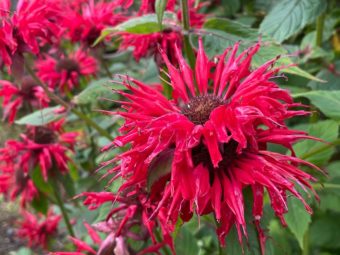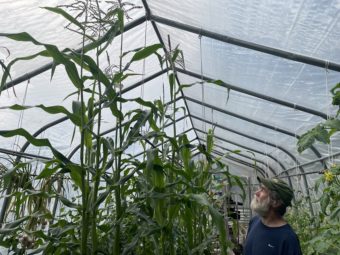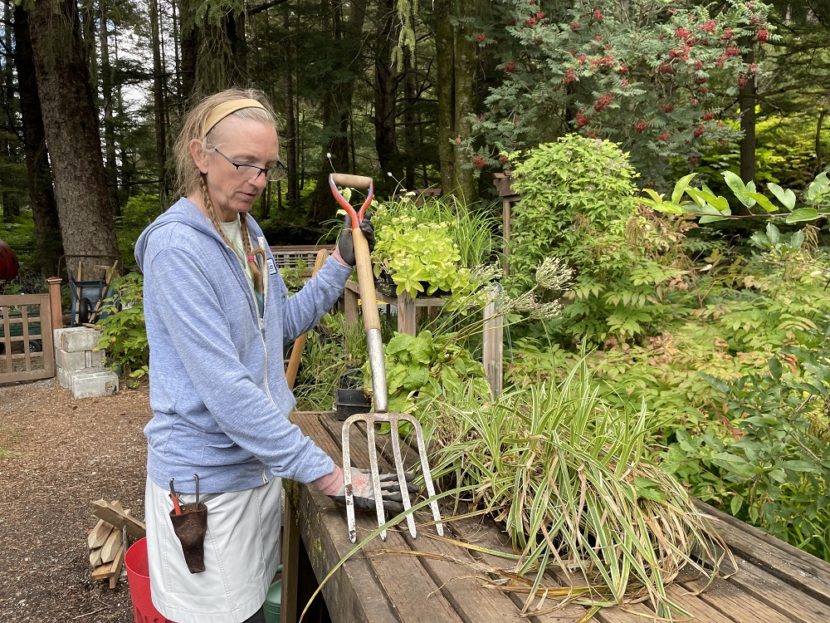
Early fall is a great time to dig up, divide, and transplant perennials. Plants can better adapt to new locations when the weather is cool and they are finished blooming.
At the Jensen-Olson Arboretum, horticulturist and manager Ginger Hudson demonstrated how to divide Japanese sedge, or Carex morrowii, that she found creeping into a walkway. She removed it from the ground using her preferred tool — a digging fork.
“If you use a shovel — that’s a big knife. You’re just going to cut a lot of roots,” Hudson said. “So a digging fork leaves as many roots intact as possible.”
Hudson used her fingers to loosen the large mass of soil, roots and greenery. At times she needed clippers to release the plants from each other, but she was careful not to cut away too much.
“You want a healthy mass of roots with the plants that you transplant,” she said. “You want large feeder roots, you want little thin hairy roots coming off those bigger roots.”
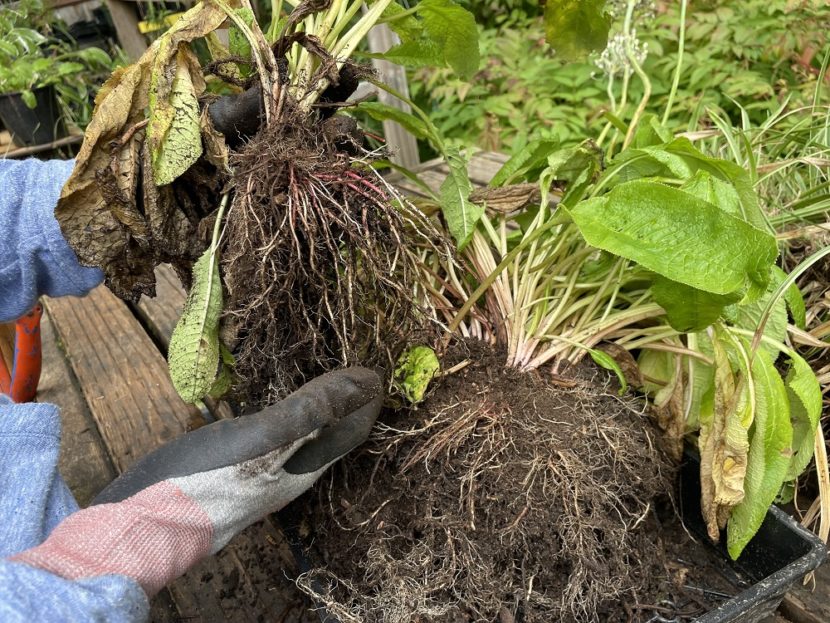
Some other perennials that can be divided this time of year are Primula florindae and Primula denticulata, popular varieties that grow well in Southeast Alaska.
“Because they like living here so well, they really reproduce well,” Hudson said. “They spread by plant clumps, which is vegetative. They also reseed themselves.”
Hudson says Juneau is renowned for being a great habitat for primulas, and the arboretum has a nationally recognized collection.
But they have thick, entangled root systems that take some patience to divide. Hudson works the clumps apart slowly with her fingers, then cuts away dead and damaged parts of the sections she separated.
“This year I have an extra step to add in, and that’s I’m going to be trimming foliage,” she said. “Because the slugs have really done a number on them, and they’re not pretty.”
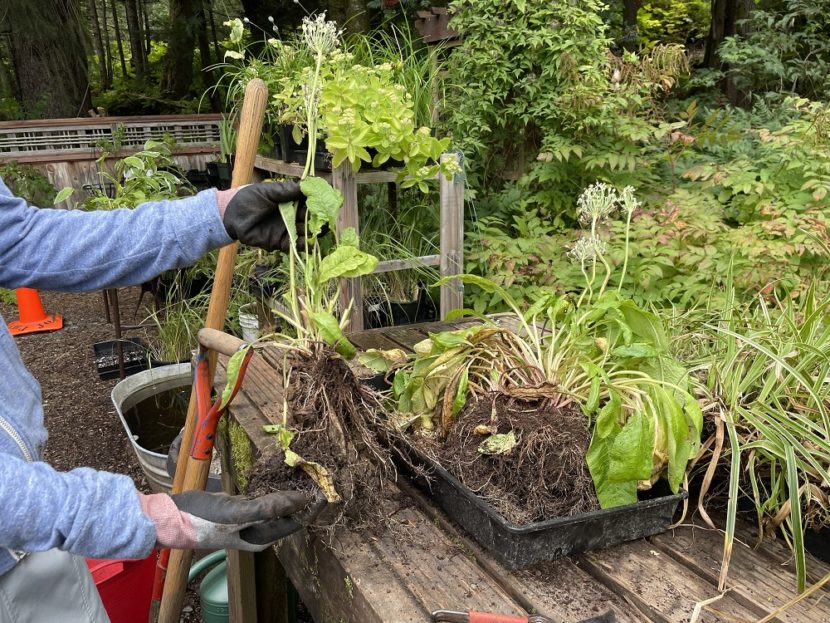
Hudson says early fall is an ideal time of year to divide and transplant Primula florindae because their roots can get established before winter. Plus, primula are likely to lose their blooms if they are transplanted while flowering.
“The plant is then is going to spend energy trying to get reestablished trying to get its roots eating again. And so it’s not going to be able to feed the flowers,” she said.


